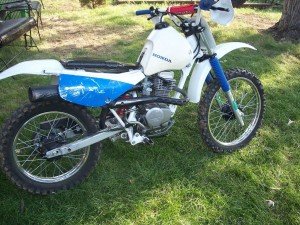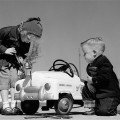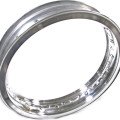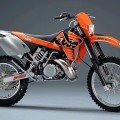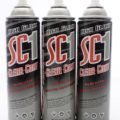 Satirist PJ O’Rouke once contemplated which kind of car offered the best handling characteristics for driving drunk. Front engine car, rear engine car – he eventually surmised that the best choice was a rental car; the reason being that it’s essentially an all terrain vehicle. Mud, snow, water, woods – it can go anywhere. He admitted you couldn’t always get it back, but that was only problematic for the rental car company.
With relatively few exceptions, every motorcycle manufacturer offers some kind of Dual Sport in their line up. Some bikes are fully equipped for off road racing, some are better suited for asphalt, others strive for a perfect balance between the two. No matter what displacement you decide on or brand you pick, I say the best kind of Dual Sport to buy is a used one.
Since Dual Sport motorcycles are made to go off road, it’s inevitable that they end up in the dirt – as in on the ground. A brand new off road bike depreciates the moment it rolls out of the dealership and eventually the pretty graphics that adorn it will become horribly disfigured the first time it cart wheels down a trail or gets ground into the gravel. I say save yourself the heartache of dumping your virgin ride in the dirt and save some money while you’re at it. Plus searching for a used bike offers a delicious sense of anticipation; you might find a bike that has some great upgrades like a Methanol Injection System or cup holder.
DECIPHERING ADS
There’s something about trawling through the motorcycle ads on Craigslist that’s reminiscent of hunting for treasure at a thrift store – just without the funky odor or annoyingly friendly handicapped people who work there. Sift through enough size 44 underwear, old crutches, and motel art and eventually you’re bound to turn up a good deal, all it takes is patience and a lot of hand sanitizer.
Ads might tell you a little something about the bike, but they can also reveal a lot about the seller. During my (brief, half-assed) research for this post I spent some time browsing on Craigslist and found some blatant examples of this. If I manipulated them into a ‘greatest hits’ compilation, the ad would read like this :
Satirist PJ O’Rouke once contemplated which kind of car offered the best handling characteristics for driving drunk. Front engine car, rear engine car – he eventually surmised that the best choice was a rental car; the reason being that it’s essentially an all terrain vehicle. Mud, snow, water, woods – it can go anywhere. He admitted you couldn’t always get it back, but that was only problematic for the rental car company.
With relatively few exceptions, every motorcycle manufacturer offers some kind of Dual Sport in their line up. Some bikes are fully equipped for off road racing, some are better suited for asphalt, others strive for a perfect balance between the two. No matter what displacement you decide on or brand you pick, I say the best kind of Dual Sport to buy is a used one.
Since Dual Sport motorcycles are made to go off road, it’s inevitable that they end up in the dirt – as in on the ground. A brand new off road bike depreciates the moment it rolls out of the dealership and eventually the pretty graphics that adorn it will become horribly disfigured the first time it cart wheels down a trail or gets ground into the gravel. I say save yourself the heartache of dumping your virgin ride in the dirt and save some money while you’re at it. Plus searching for a used bike offers a delicious sense of anticipation; you might find a bike that has some great upgrades like a Methanol Injection System or cup holder.
DECIPHERING ADS
There’s something about trawling through the motorcycle ads on Craigslist that’s reminiscent of hunting for treasure at a thrift store – just without the funky odor or annoyingly friendly handicapped people who work there. Sift through enough size 44 underwear, old crutches, and motel art and eventually you’re bound to turn up a good deal, all it takes is patience and a lot of hand sanitizer.
Ads might tell you a little something about the bike, but they can also reveal a lot about the seller. During my (brief, half-assed) research for this post I spent some time browsing on Craigslist and found some blatant examples of this. If I manipulated them into a ‘greatest hits’ compilation, the ad would read like this :
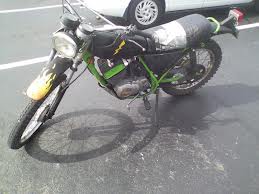 Badas bike for sale!!!!!! Street leagle duel sport for sale relly fast will blow away a CR500!!!! New power band and 1 set of street tires 1 set of paddel tires!!! NOT a bike for beginers!!!!! If your loeking for a cool bike this is it!!!! 1000 dollers firm or make offer will concider trade for guns or septic tank.
Several conclusions can be drawn from an in depth critical analysis of this example. The first and foremost being that there’s a distinct possibility the seller’s parents were already related before they got married. The second is that he’s an imbecile. And third – I don’t want to buy anything from him.
Hyperbole aside, I do tend to assume that if someone has trouble spelling two syllable words they’re probably a little dense. This doesn’t mean you have to be well versed in the King’s English to perform routine maintenance on a motorcycle. But there’s no mention of maintenance at all, or upgrades, or Title. There’s also the new powerband, set of paddle tires, and boisterous claim it will blow away a CR500. Taking all of these things into consideration along with the overzealous use of exclamation points paints a mental image of someone who’s soft between the ears and hard on a bike.
As the saying goes, a picture is worth a thousand words. Looking past the bike in the ad’s picture can help determine what kind of person the seller is. If the bike is sitting symmetrically on a service stand in the middle of a meticulously manicured lawn or a clean well organized garage it stands to reason they’ve cared for the bike in the same fashion. The next step is to verify it with a phone call.
Badas bike for sale!!!!!! Street leagle duel sport for sale relly fast will blow away a CR500!!!! New power band and 1 set of street tires 1 set of paddel tires!!! NOT a bike for beginers!!!!! If your loeking for a cool bike this is it!!!! 1000 dollers firm or make offer will concider trade for guns or septic tank.
Several conclusions can be drawn from an in depth critical analysis of this example. The first and foremost being that there’s a distinct possibility the seller’s parents were already related before they got married. The second is that he’s an imbecile. And third – I don’t want to buy anything from him.
Hyperbole aside, I do tend to assume that if someone has trouble spelling two syllable words they’re probably a little dense. This doesn’t mean you have to be well versed in the King’s English to perform routine maintenance on a motorcycle. But there’s no mention of maintenance at all, or upgrades, or Title. There’s also the new powerband, set of paddle tires, and boisterous claim it will blow away a CR500. Taking all of these things into consideration along with the overzealous use of exclamation points paints a mental image of someone who’s soft between the ears and hard on a bike.
As the saying goes, a picture is worth a thousand words. Looking past the bike in the ad’s picture can help determine what kind of person the seller is. If the bike is sitting symmetrically on a service stand in the middle of a meticulously manicured lawn or a clean well organized garage it stands to reason they’ve cared for the bike in the same fashion. The next step is to verify it with a phone call.
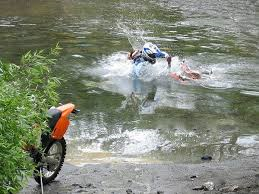
NEVER BEEN RACED!
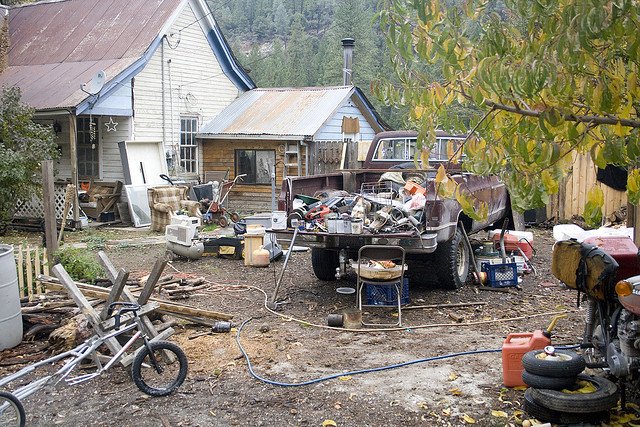
DON’T EVEN BOTHER
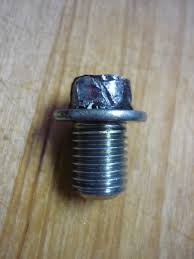
HEADACHE IN THE MAKING
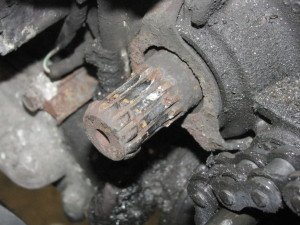
SEVERELY STRIPPED SHIFT SHAFT
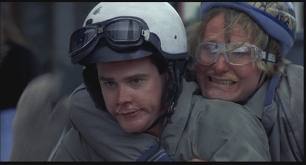
DON’T BUY IT, IT’S TOO SMALL FOR US – I MEAN YOU!
 I ended up buying the bike for 700 dollars off the asking price, which made it a screaming deal. It cost me 30 bucks and a Saturday afternoon (with the generous help of a motorcycle mechanic friend) to tune the carburetor properly for the aftermarket exhaust and the bike ran great.
So when you’re shopping for a used bike make sure the condition and asking price are proportional and remember – used bikes aren’t necessarily broken down bikes, some are just broken in!
I ended up buying the bike for 700 dollars off the asking price, which made it a screaming deal. It cost me 30 bucks and a Saturday afternoon (with the generous help of a motorcycle mechanic friend) to tune the carburetor properly for the aftermarket exhaust and the bike ran great.
So when you’re shopping for a used bike make sure the condition and asking price are proportional and remember – used bikes aren’t necessarily broken down bikes, some are just broken in!